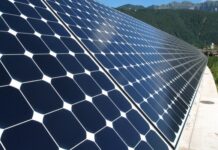Europe added 2100MW of new offshore wind capacity in the first half of 2023, elevating its total offshore wind capacity to 32GW. Over 50% of this growth occurred in the Netherlands, while the remainder was distributed across the UK, Germany, and Norway. WindEurope’s data highlighted that decisions for an additional 5GW were made after experiencing delays in 2022. Despite this progress, these numbers fall short of the quantities required to meet Europe’s energy and climate objectives. WindEurope emphasized that the European Union (EU) should be installing an average of 11GW per year of offshore wind until 2030.
The organization stressed the necessity for regulatory adjustments, encompassing permitting and market design, to bolster the rationale for such investments. WindEurope deemed the existing EU Green Deal Industrial Plan and Net-Zero Industry Act inadequate for the task at hand. A central issue also lay in the design of auctions, with governments being urged to incorporate cost indexation while avoiding unbounded negative bidding. WindEurope advocated for full auction price indexing to counter inflation between auctions and the actual procurement of equipment.
The trade association underscored the rise in offshore wind turbine costs, indicating an upsurge of up to 40% in the last two years. It warned that governments ignoring these cost increases would risk the cancellation of projects. As an example, it referenced Vattenfall’s decision to halt the Boreas offshore wind project in the UK. WindEurope further cautioned against uncapped negative bidding practices, revealing that 60% of the awarded 12GW offshore wind in the current year used this approach, with developers offering sizable amounts, such as over €1.5bn per GW in Germany. This method substantially escalated wind farm construction costs, which developers would likely transfer to electricity consumers and the supply chain, both of which are already under strain.
In the preceding year, Europe observed no new significant investments in large-scale offshore wind. This lapse was attributed to escalating project costs due to inflation, as well as investor concerns arising from government interventions in electricity markets. However, 2023 has witnessed a turnaround, with six projects securing Final Investment Decisions (FID), amounting to €15 billion of investment and the commitment to 5GW of fresh offshore wind capacity.









































